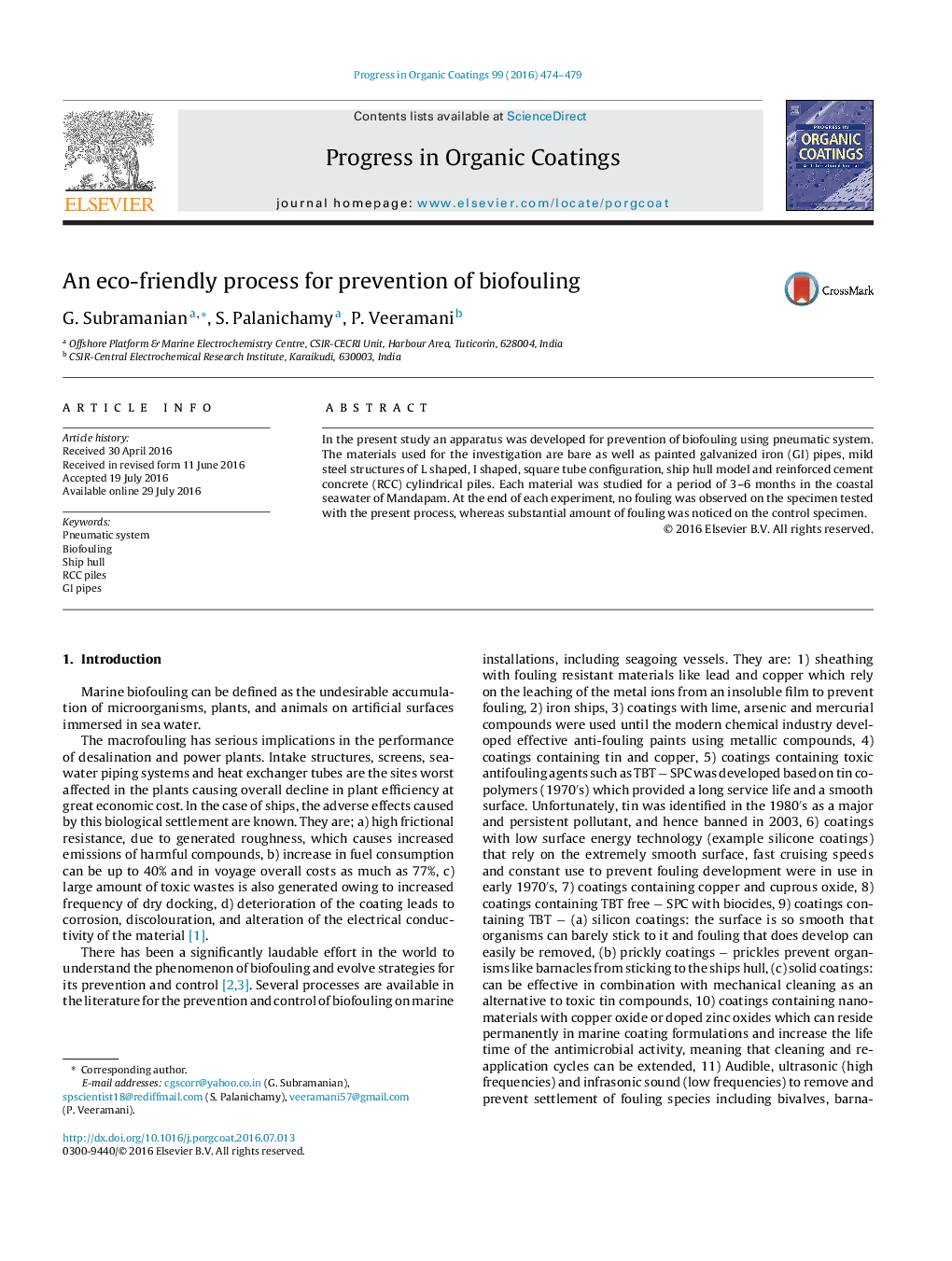| Article ID | Journal | Published Year | Pages | File Type |
|---|---|---|---|---|
| 692084 | Progress in Organic Coatings | 2016 | 6 Pages |
•The present process is suitable for the prevention of fouling on the surfaces of metals & alloys, RCC and other structural materials of uniform configuration submerged in sea. The surface area of the fouling prevention can be increased by increasing the piston length of the pneumatic system.•The main advantages of the present process are, i) it does not warrant dry-docking for removal of fouling organisms, as fouling is prevented completely, ii) it completely eliminates the release of toxic ions from operating vessels and emission of pollutants during dry-docking, compared to the existing antifouling systems, iii) this process can be applied even for the materials of abrasive nature and iv) the fouling proof nature of the system not only conserves fuel for sea going vessels but also enhances the life expectancy of the marine installations.•The probable end users of the process are sea launch agencies, port authorities, oil & natural gas commission agencies, and shipping Industry.
In the present study an apparatus was developed for prevention of biofouling using pneumatic system. The materials used for the investigation are bare as well as painted galvanized iron (GI) pipes, mild steel structures of L shaped, I shaped, square tube configuration, ship hull model and reinforced cement concrete (RCC) cylindrical piles. Each material was studied for a period of 3–6 months in the coastal seawater of Mandapam. At the end of each experiment, no fouling was observed on the specimen tested with the present process, whereas substantial amount of fouling was noticed on the control specimen.
